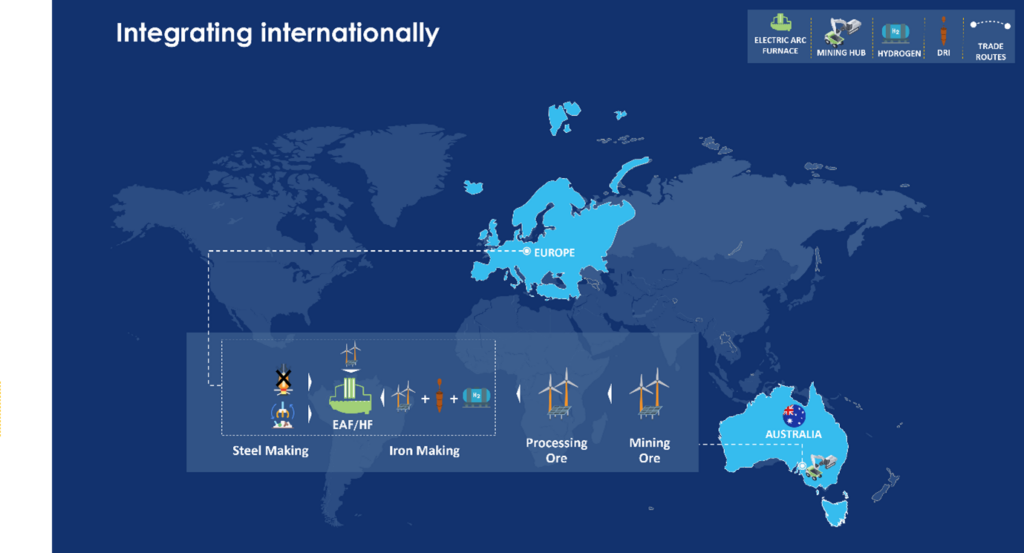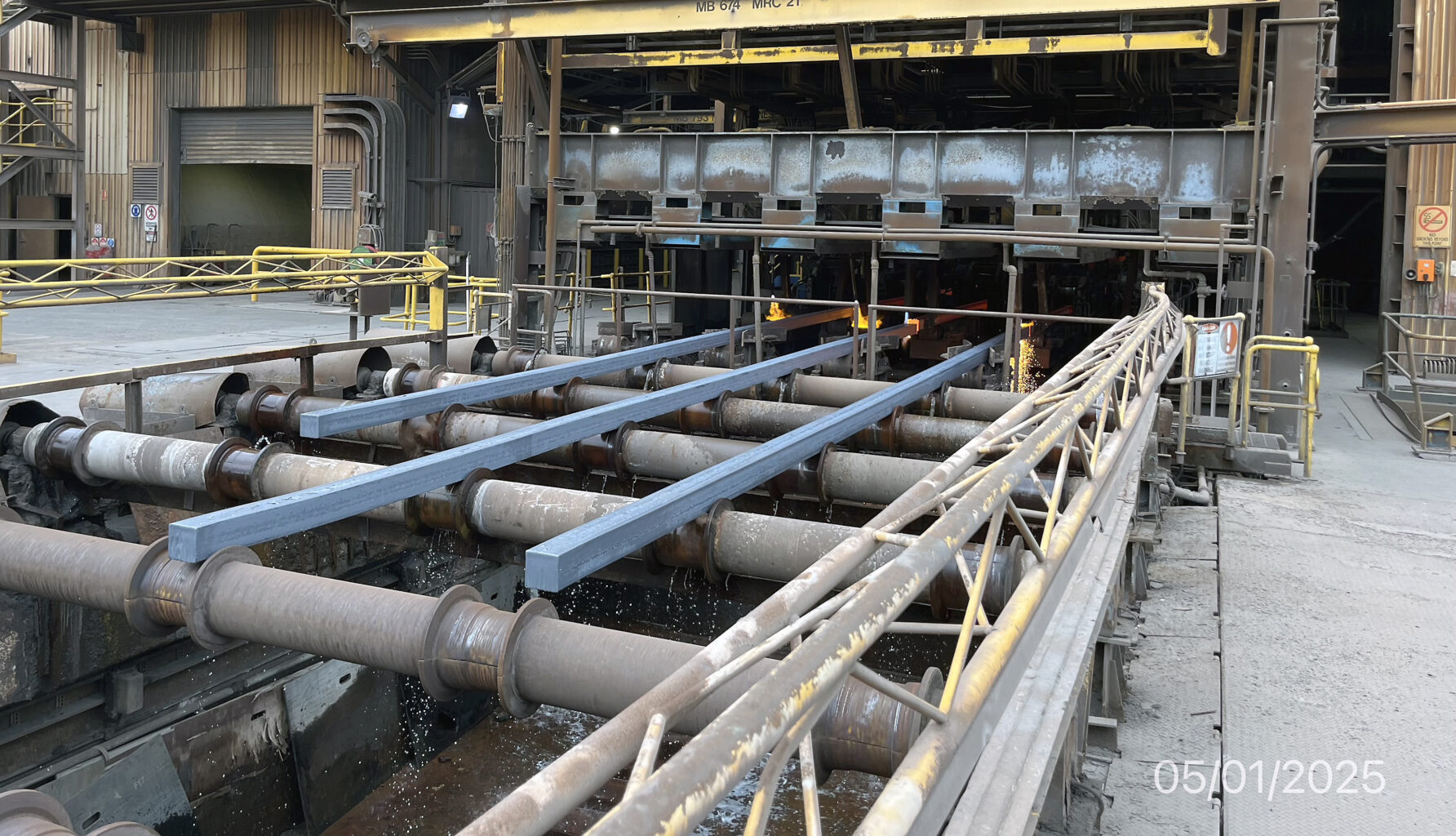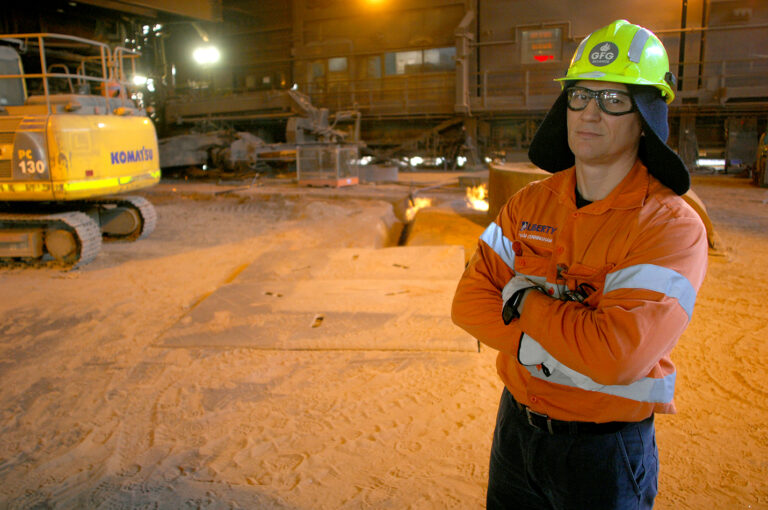Rita Monteiro – Global Head of Decarbonisation
- Hydrogen a potential driving force for low emissions iron and steel making and a catalyst for the global energy transition
- Geographically-driven strategy can leverage inherent regional strengths in Australia, Europe and beyond
- R&D collaboration and supportive policy environment needed to accelerate change
As the world wages war on carbon, no industry matters more than steel. Steel is already responsible for 7-8% of the world’s emissions. And with global steel demand on course to rise 30% over the next three decades, unless we act fast the problem’s going to get worse.
Navigating the challenge of significantly reducing global steel emissions is no small task, particularly given the nascent state of decarbonisation technologies. Accelerated adoption of such solutions could intensify production costs, adding turbulence to an already volatile market.
But as steel is an indispensable component of modern sectors like infrastructure, energy, and transportation, this challenge also presents an opportunity. Widespread application of steel decarbonisation technologies can both make steel production more sustainable, and trigger transformative changes across multiple industries, paving the way for global decarbonisation to be faster and more cost-effective.
Geographically-driven strategy
I recently had the privilege of addressing the challenge at the Kallanish’s Europe Steel Markets conference in Amsterdam. Such a complex issue means we must ground our efforts in foundational principles. I firmly believe in the need for a geographically-driven strategy to expedite and realise change – a global collaboration that leverages inherent regional strengths.
Historically, steel plants were located near primary energy resources, such as coal. As we transition away from coal, the path to comprehensive decarbonisation, while maintaining diversified global steel production, depends on integrating clean and renewable energy sources into pivotal segments of the global supply chain. This includes the sourcing and processing of raw materials, manufacturing stages, and logistical operations.
One of the key enablers is clean and renewable energy-based hydrogen production. Hydrogen is not just a game-changer but a driving force, offering vast potential to accelerate low emissions iron and steel making.
But there are two major blockers. First, transitioning half of the EU’s furnace steel production (around 45 million tonnes) to Direct Reduced Iron (DRI) based steel requires a substantial amount of hydrogen – approximately 2.7 million tonnes. The energy demand to produce this hydrogen is around 150,000 GWh of power. It’s crucial to note that this figure only represents the energy required to generate the hydrogen serving as a reducing agent in the iron-making process.
Second, hydrogen cannot yet be economically and environmentally shipped. That’s why the coming hydrogen economy must prioritise locations that combine with major renewable energy production potential, and a directly linked off-taker. Hydrogen works better where it is produced.

Australia’s natural advantage
This combination of natural resources, plus a supportive government, are the guiding principles behind our Iron and Steel transformation development in Whyalla, south Australia. It is a location blessed with abundant solar and wind energy, together with rich reserves of magnetite, a rich source of ore with a 70% plus iron content. And all just a short journey from a substantial deepwater port.
As our Chairman Sanjeev Gupta told a recent conference in Brisbane it means we can use the sun to make electricity, the electricity to make green hydrogen, and the green hydrogen to make green iron. We can ship the iron to our plants across Australia and the rest of the world to make green steel.
It’s a compelling vision. And while not every country is blessed with Australia’s resources, other regions can play to their strengths. Europe for example is gradually increasing its DRI production capacity, accelerating its drive to decarbonise the industry, while remaining competitive. In Romania, we see particular potential for local DRI production through high-grade ore imports and on-site renewable capacity building.
This approach means one region’s iron production can support another’s steel making. It will enable progress both locally and globally towards a more sustainable steel industry. And as technology evolves, more opportunities to diversify and optimise global supply chains will emerge.
R&D collaboration and policy support
The industry must execute its decarbonisation far faster than the current 25-year timeline. LIBERTY’s own ambition to be carbon neutral by 2030 is why we’re doubling down our efforts where conditions are most suitable.

Corporate accountability will undeniably play an instrumental role in accelerating decarbonisation efforts, laying the groundwork for conscientious and effective execution. However, to truly instigate a global material transformation, we require the integration of two additional pivotal components.
The first involves cross-industry collaboration and R&D. This collaborative approach is fundamental for broadening the horizon of our current technological capabilities, thereby sparking innovation and disruptive technologies, while profoundly enhancing the efficiency of circularity solutions. This will demand the active participation of both corporations and governmental bodies, working in synergy to promote sustainable change.
The second pillar is development of strategic, comprehensive, and transparent climate and industrial policies. This policy framework needs to rest on three primary tenets: the establishment of resilient infrastructure, assured access to essential resources, and development of both enabling and enforcing mechanisms such as ETS and other forms of carbon price.
An infrastructure to fundamentally support the energy transition and efficient movement of goods must be put in place. This involves securing a steady supply of raw materials, such ensuring the availability of scrap in Europe, which is critical to accessing key decarbonisation materials in the short term. Additionally, implementation of transparent and accessible funding mechanisms is necessary, as evidenced by US initiatives from the Inflation Reduction Act and the evolving industrial policy in the EU.
These enabling policies can then work alongside compliance-focused carbon pricing mechanisms, including the Emissions Trading System (ETS), Carbon Border Adjustment Mechanism (CBAM), and carbon tax. This blend of strategic policies and mechanisms will steer us towards a more rapid and seamless transition to a decarbonised future while securing a resilient economy.
It is my core conviction that to unlock hydrogen as a crucial fuel for our decarbonised global economy, we need comprehensive integration throughout its entire supply chain, prioritising areas where abundant resources can make the most significant and immediate impact. While transition is costly, we cannot afford 20 years to decarbonise.
Latest News
View All Media Releases
Media Releases
LIBERTY proposes new measures to drive demand for UK steel production and stimulate investment
LIBERTY Steel’s submission to the UK Steel Strategy consultation has proposed decisive Government action in the form of strategic demand...
View Archived
Archived
Whyalla steelworks up and rolling again
Another milestone following blast furnace restart The resumption of steel production in the Whyalla Steelworks has reached another milestone with...
View Archived
Archived
Whyalla steel production restarts but GFG cautious
Whyalla Steelworks has cast its first steel following a 4-month shut down due to operational challenges and extensive repairs. The...
View Archived
Archived
Introducing the Steel Town Podcast: A glimpse into the heart of steelmaking in Whyalla
GFG Alliance has launched Steel Town, a new podcast series that takes listeners into the world of mining and steelmaking in...
View